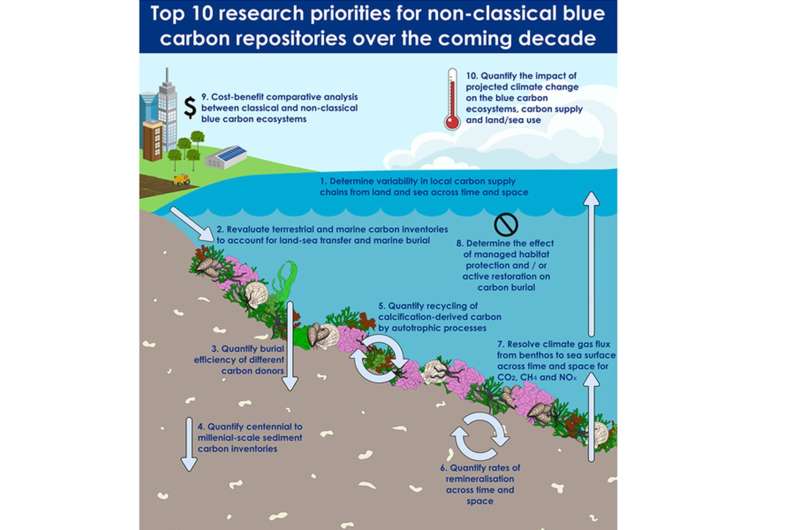This article has been reviewed according to Science X's and . have highlighted the following attributes while ensuring the content's credibility:
fact-checked
peer-reviewed publication
trusted source
proofread
Overlooked coastal marine ecosystems can capture more carbon dioxide than previously thought, finds study

The ability of coastal ecosystems to capture and store carbon dioxide has been underestimated. The question is not just about seagrass meadows and mangrove forests, which have already attracted attention, but a wide range of different ecosystems whose carbon storing function has been overlooked. However, for these areas to be able to combat climate change, they must be protected.
Coastal ecosystems have been shown to be extremely important in combating rising carbon dioxide levels in the atmosphere. This is thanks to their ability to capture and store carbon dioxide, known as blue carbon.
Historically, blue carbon research has focused almost exclusively on seagrass meadows, mangrove forests and tidal marshes, while other ecosystems have been overlooked. The importance of these other ecosystems in mitigating climate change has been underrated, and the total amount of carbon sequestered in the oceans has thus been greatly underestimated.
In published in Global Change Biology led by researchers from Umeå Marine Sciences Center and the Department of Ecology and environmental science at Umeå University, together with collaborators at Deakin University in Australia, NatureScot and Marine Scotland Science in the U.K., more than 250 scientific publications were analyzed to evaluate which other coastal ecosystems may be important for blue carbon storage.
The studies cover polar regions as well as temperate and tropical oceans. Critically, the research shows that mud / tidal flats, shelf sediments (particularly fjords), some parts of coral reefs (the lagoons) and coralline algal beds are in fact significant blue carbon stores.
"Our previously limited view of blue carbon has greatly underestimated the importance of coastal seas as nature-based solutions to climate change," says Professor Nicholas Kamenos, director of Umeå Marine Sciences Center at Umeå University.
But coastal seas are often heavily exploited, and thus risk losing their ability to capture and store carbon. The study thus proposes a marine ecosystem management strategy that guides the protection of all blue carbon ecosystems in their climate change mitigation role.
"An important message of our study is that we need to ensure the long-term protection of these areas worldwide to maximize the positive role they have in mitigating the effects of climate change," says Dr. Heidi Burdett, Associate Professor at the Department of Ecology and Environmental Science, Umeå University.
More information: Kelly James et al, It's time to broaden what we consider a 'blue carbon ecosystem," Global Change Biology (2024).
Journal information: Global Change Biology
Provided by Umea University




















